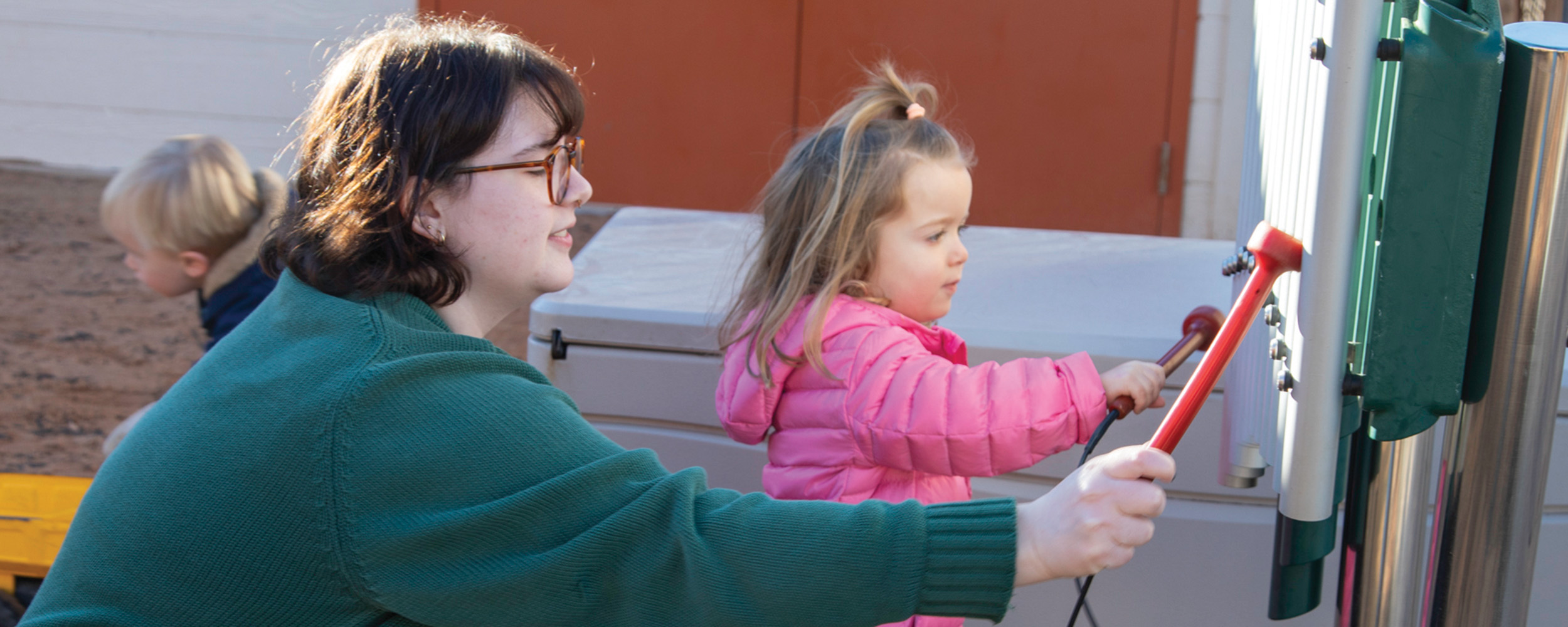
Shaping Oklahoma Youth: Child Development Lab celebrates centennial
Wednesday, May 8, 2024
Media Contact: Mack Burke | Associate Director of Media Relations | 405-744-5540 | editor@okstate.edu
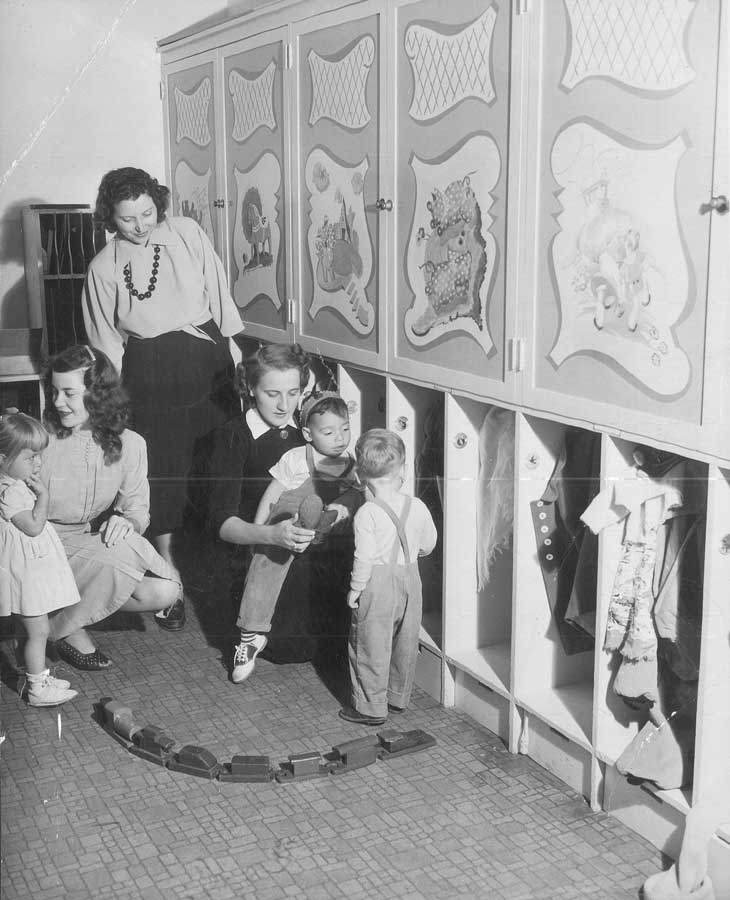
The day is just starting, but the children attending the Cleo L. Craig Child Development Laboratory are wide awake.
Ranging from 1-5 years-old, the youngsters are always on the move, whether participating in a “good morning” song-and-dance, rotating between stations in their classroom or building sandcastles on the playground outside.
There’s rarely a dull moment inside the CDL.
Housed within Nancy Randolph Davis West, the lab offers an innovative, educational and inclusive learning environment for children. In addition to shaping Stillwater youth, the CDL provides invaluable hands-on learning experiences for Oklahoma State University students, preparing them for careers in early childhood education.
This year, the lab celebrates a century of serving the university, community and state. It is recognized as the second-oldest development lab in the country.
“It’s important to reflect on the many children, families and students who have been positively impacted by educational opportunities offered at the CDL,” director Sandy Major said. “The lab has been a learning, teaching and research environment for students at OSU for 100 years, and it’s so exciting to look back on both the history and transformation of ECE.”
Laying the Foundation
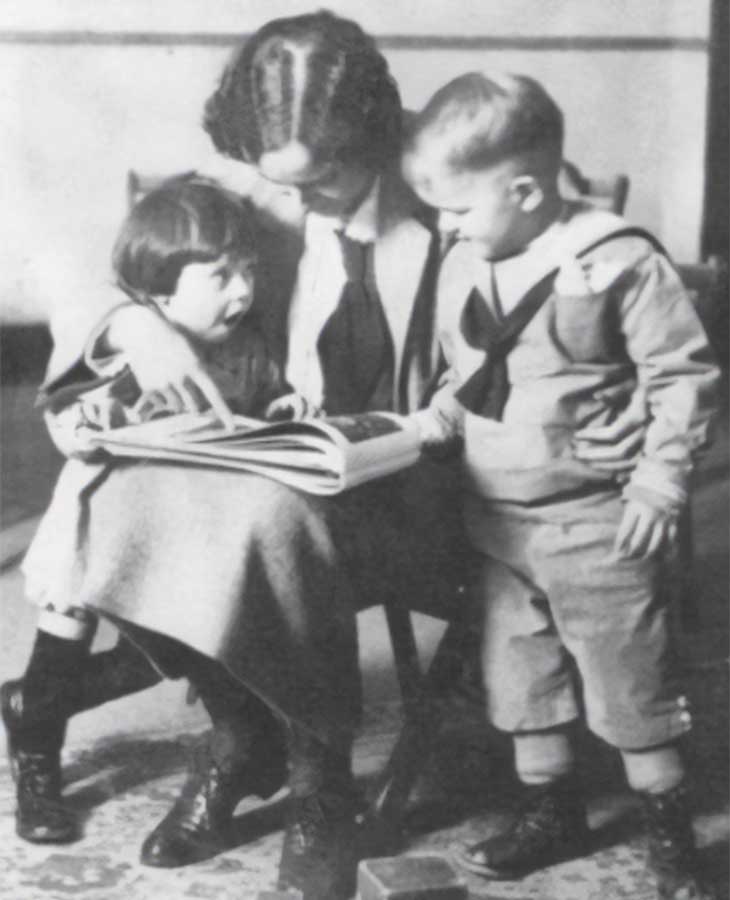
The CDL has been a feature on OSU’s campus in various iterations since it first opened as a nursery school in 1924. Back then, the CDL had only two classrooms and worked with a small number of 2-and 3-year olds.
OSU faculty member Girdie Ware became one of the nursery school’s first teachers when her son, Bob, began attending in the early 1930s.
“Mom and Dad really thought outside the box when it came to education,” said Bob, now 95. “I didn’t come to appreciate that until many years later.”
The Ware family was instrumental in helping lay the groundwork for the CDL. Girdie worked closely with former home economics dean Nora Talbot to establish programs that were uncommon at the time. She shared her belief with former department head Virginia Messenger that teachers not only needed to be trained to work with children, but also have education degrees.
Girdie’s husband, H.G., helped out any way he could, even upgrading the playground by designing his own jungle gym equipment with the help of OSU’s engineering tech program.
Their daughter, Ramona Paul, earned her degree at OSU and later became assistant state superintendent, helping the CDL become a true child development program.
“The support from Dean Talbot and Dr. Messenger to experiment and try new things created the basis for what the CDL has become,” Bob said. “I think it speaks to that strong foundation for the CDL to still be so highly regarded 100 years later.”
Valuing Children
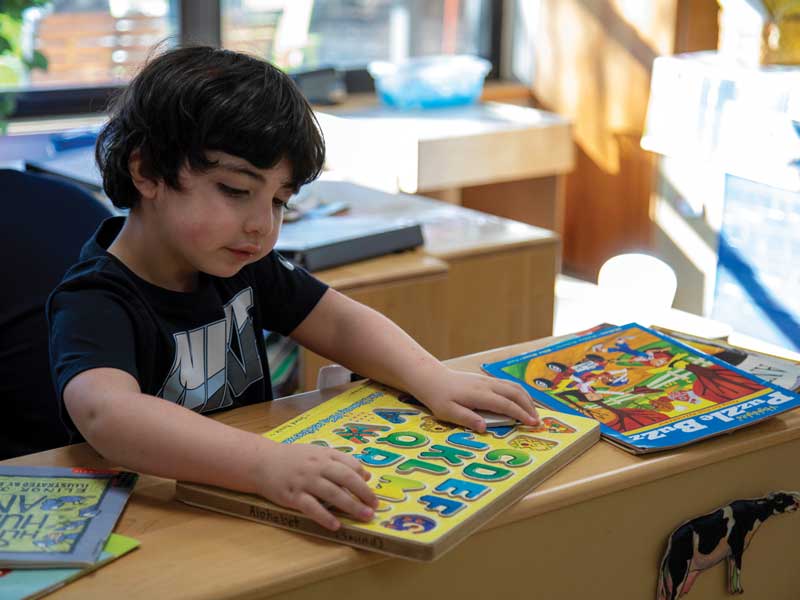
The OSU students who learned from their experiences observing and working at the CDL have made a wide impact in Oklahoma and beyond.
In the early 1970s, Anita Schlaht attended OSU to study early childhood education. She inherited a love of children from her mom, Donna Edwards, who experienced the CDL herself in the mid 1940s — both as a student and a teacher after graduating.
Edwards later became a professor at the University of Central Oklahoma and played an integral role in starting its own Child Study Center. The program was significantly modeled on the CDL’s success and has helped Oklahoma produce even more well-prepared teachers for its schools.
“My mom raised my brothers and me with the same philosophy she took to teaching,” Schlaht said. “She gave us lots of different experiences, watching to see what our talents and interests were and then being really supportive of those. She had such a dedication to children.”
Although Schlaht didn’t finish her degree at OSU, she learned more during two years in Stillwater than she did in four years at other institutions.
She spent hours in the screened-off observation areas in the back of the classrooms, watching children at play. It was a much different experience than the modern observation booths, which are elevated spaces that utilize one-way glass.
Schlaht picked up countless tips and tricks that she still uses to this day. Most of all, she developed the core value that children need to learn through play. Throughout her career in education, she focused on creating comfortable environments where children would thrive.
She started her own preschool, taught kindergarten, worked for a school-based nonprofit and created curriculum for children’s programs at a museum. Her 1974 poem, “Just Playing,” went international.

Schlaht’s classrooms were built on the lessons she learned at OSU and the CDL. That formula has set countless children up for success, becoming everything from doctors to lawyers and athletes, including gymnast and 7-time Olympic medalist Shannon Miller.
“To be in education, you need to value children, their uniqueness, their differences, their energy and creativity,” Schlaht said. “If they learn to love learning, they are going to make it. They become lifelong learners, and that just sets them up for success.
“I learned so much from my teachers and peers at OSU that were just invaluable. The commitment to allowing students to be active in the program is huge.”
The concept of learning through play is called developmentally appropriate practice. April Stobbe, another CDL alumna, said the idea was drilled into them from day one. Throughout the CDL’s history, much has changed, but the philosophy remains the same.
“I used absolutely every single thing I learned there at my job right out of college,” Stobbe said. “I think it says a lot for the university to have supported the program for that long and for it to continue to grow, both in the research side and the education side.”
Maintaining a first-class program
In 2006, Stobbe’s parents, C.L. and Helen Craig, made a naming gift to establish the lab as the Cleo L. Craig Child Development Laboratory. The facility underwent a $1 million upgrade, while additional renovations were made in 2017, expanding to four total classrooms and providing a new outdoor learning environment.
C.L. said it has been extremely gratifying to look back and see the impact graduates have had on the children of Oklahoma.
“Early childhood education is generally overlooked, but it’s proven to be very important,” he said. “Aside from helping local kids, of course, the idea is to send that expertise out into the whole state.”
Thanks in large part to the Craigs’ generosity, the CDL has the capacity to enroll 71 children. Its services are so highly regarded and in such high demand that more than 250 individuals remain on the waitlist.
Over the years, the Craigs established multiple scholarships for student teachers and also fund a music therapy program at the CDL.
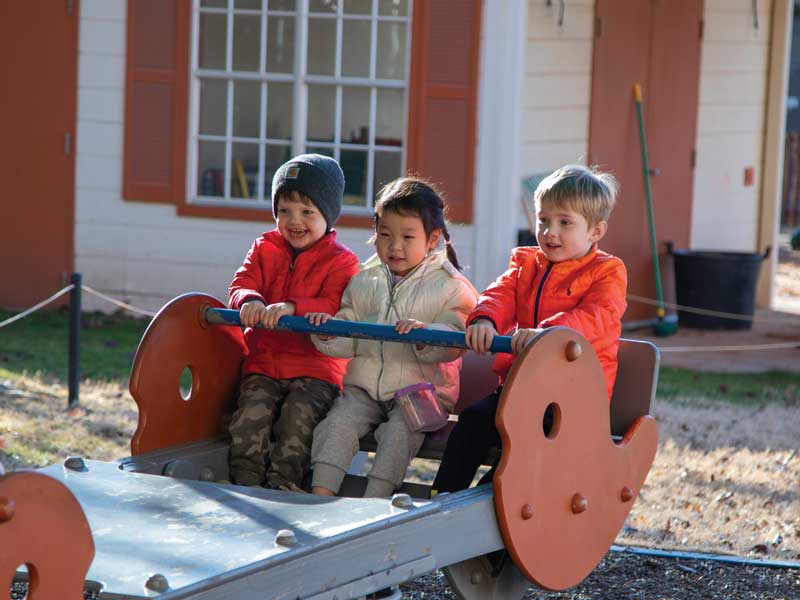
They, along with several others, are early champions of the CDL’s centennial fundraising efforts, which has a goal to raise $1 million. Private support will help update classrooms and spaces, hire and retain qualified staff and maintain the high-quality education that has become synonymous with the program.
“Early childhood professionals are one of the lowest paid within the educational system,” said Helen, a former college student of Girdie Ware at OSU. “That just shows why it’s even more important to give to this area because it, without a doubt, takes a boost from other people to make it all work.”
With the help of eight teaching assistants, five certified teachers lead the classrooms each week, and more than 50 college students spend time in the lab observing, interning or earning clinical hours.
The CDL holds accreditation by the National Association for the Education of Young Children and is an Oklahoma State Department of Education Accredited Non-Public School. It has been rated as a five-star child care facility by the state of Oklahoma and its Department of Human Services as of December 2022.
The lab strives to offer an inclusive learning environment for all children, providing the same opportunities to kids with learning disabilities.
“Having a diversified classroom is wonderful,” Helen said. “For one thing, it’s great for the special needs children to get to be in normal situations. But it’s also good for the other kids to learn how to include them and how to treat those people.”
The next class
Weather permitting, the children go outside to play often. Indoors, they are exposed to a wide variety of activities, giving them a chance to discover their interests. Some of the kids already have big aspirations.
In the 4-year-old classroom, Emma S. enjoys reading and wants to be a doctor, while Yatheesha C. plans to help people in other ways, dreaming of becoming Spider-Man. Clara R. doesn’t know what her future holds, but she has plenty of time to figure it out.
Margaret Napier, a teacher at the CDL for 24 years, loves to see kids improve and do things they couldn’t do before. No matter what the children end up becoming, “Ms. Margaret” hopes to always recognize them.
“Being here for so long, sometimes I’ll see kids who were in my class at CDL grow up and graduate from either high school or OSU … and even though they’re all grown up, I can still see their little faces in them,” Napier said.
On April 6, the CDL held its 100th birthday party on Willard Lawn featuring bounce houses and carnival games. This fall, it will host a CDL Centennial tailgate during football season.
Photos by: Bryanna Freer and Provided
Story by: Grant Ramirez | STATE Magazine
